Matcha tea
$80 Original price was: $80.$68Current price is: $68.
- Product name: Matcha tea
- Origin: Japan
- Ingredients: 100% naturally, no flavoring or preservatives.
- Size: 40gr
- Store in a dry, cool place, away from direct light
Matcha tea is a vibrant green powdered tea that has been cherished in Japanese culture for centuries. Unlike traditional green tea, which is steeped and discarded, matcha is made from finely ground tea leaves, allowing you to consume the entire leaf and maximize its health benefits.
Known for its rich umami flavor, smooth texture, and natural energy boost, matcha has gained worldwide popularity as a superfood packed with antioxidants, vitamins, and amino acids. Whether enjoyed in a traditional tea ceremony, a modern latte, or a refreshing smoothie, matcha offers a unique and invigorating experience. Let’s explore the origins, benefits, and best ways to enjoy this beloved green tea!
Product information matcha tea
- Product name: Matcha tea
- Origin: Japan
- Ingredients: 100% naturally, no flavoring or preservatives.
- Size: 40gr
- Store in a dry, cool place, away from direct light
What is matcha tea?
Matcha tea has a rich history that dates back over a thousand years, originating from China before becoming a cultural cornerstone in Japan. The tradition of powdered tea began during the Tang Dynasty (7th–10th century) when Chinese monks started grinding tea leaves into powder and whisking them with hot water. However, it was during the Song Dynasty (10th–13th century) that the method of steaming and grinding green tea into a fine powder truly developed.
In the 12th century, a Japanese Buddhist monk named Eisai brought this powdered tea technique to Japan after studying in China. He recognized its calming yet energizing effects, making it an ideal drink for meditation. Over time, matcha became an integral part of Japanese tea culture, especially within the Zen Buddhist tradition. By the 16th century, the famous tea master Sen no Rikyū refined the Japanese tea ceremony (chanoyu), elevating matcha preparation into a spiritual and artistic practice.
Today, matcha is primarily produced in Japan, especially in regions like Uji, Kyoto, and Nishio, where the climate and soil conditions are perfect for growing high-quality, shade-grown tea leaves. Thanks to its unique cultivation, preparation, and health benefits, matcha has gained global popularity and is now enjoyed in traditional ceremonies, modern lattes, and even desserts.
The health benefits of matcha tea
Matcha tea is not only a flavorful and refreshing drink but also a powerful superfood packed with essential nutrients and antioxidants. Thanks to its unique cultivation and preparation process, matcha provides a wide range of health benefits that support both physical and mental well-being.
- Rich in antioxidants: Matcha is loaded with catechins, particularly EGCG (epigallocatechin gallate), a potent antioxidant known for its ability to combat free radicals and reduce oxidative stress. This helps protect cells from damage, promoting overall health and longevity.
- Boosts energy and focus: Unlike coffee, which can cause jitters, matcha provides a sustained energy boost due to its natural combination of caffeine and L-theanine. While caffeine increases alertness, L-theanine promotes relaxation and focus, making matcha an excellent choice for enhancing concentration without crashes.
- Supports metabolism and weight loss: Matcha has been shown to increase metabolism and enhance fat burning, making it a great addition to a weight management routine. Studies suggest that EGCG and caffeine in matcha work together to promote calorie burning and fat oxidation during exercise.
- Strengthens the immune system: The antioxidants, vitamins (A, C, and E), and chlorophyll in matcha help strengthen the immune system, making the body more resistant to infections. Its antibacterial properties also support gut health and overall immunity.
- Detoxifies the body: Because matcha tea plants are shade-grown, they develop high levels of chlorophyll, a natural detoxifier that helps the body eliminate toxins and heavy metals. Drinking matcha regularly can aid in cleansing the liver and promoting overall detoxification.
- Promotes heart health: Matcha can help reduce bad cholesterol (LDL) and lower blood pressure, reducing the risk of cardiovascular diseases. Its antioxidants also support healthy blood circulation, keeping the heart in good condition.
- Enhances skin health: Thanks to its anti-inflammatory and antibacterial properties, matcha can help improve skin clarity, reduce acne, and slow down the signs of aging. The antioxidants in matcha help protect the skin from environmental damage and promote a youthful, glowing complexion.
- Supports relaxation and mental well-being: Matcha has long been used in Zen Buddhist traditions for meditation, thanks to its calming effects. L-theanine promotes relaxation and reduces stress and anxiety, helping to create a sense of balance and well-being.
How to make matcha tea
Matcha tea is a delicious and versatile drink that can be prepared in several ways. Whether you prefer it traditional and pure or as a creamy latte, making matcha is simple and rewarding. Here’s how you can prepare the perfect cup of matcha tea.
Traditional matcha tea (Usucha – Thin tea)
This method follows the Japanese tea ceremony style, giving you a smooth, frothy, and vibrant green tea.
Ingredients:
- 1 teaspoon (2 grams) of matcha powder
- 2–3 ounces (60–90ml) of hot water (175°F / 80°C)
- A bamboo whisk (chasen) or a milk frother
- A small bowl (chawan)
Instructions:
- Sift the matcha into the bowl to remove any lumps and ensure a smooth texture.
- Add hot water (not boiling) to the bowl.
- Whisk vigorously in a “W” or “M” motion using a bamboo whisk until the tea becomes frothy. If using a milk frother, blend until smooth and foamy.
- Enjoy immediately while the tea is fresh and vibrant.
Creamy Matcha Latte
For those who enjoy a creamier and slightly sweet version, a matcha latte is the perfect choice.
Ingredients:
- 1 teaspoon of matcha powder
- 2 ounces (60ml) of hot water
- 6 ounces (180ml) of milk (dairy or plant-based like oat, almond, or soy)
- Sweetener (honey, agave, or sugar – optional)
Instructions:
- Sift the matcha into a cup or bowl.
- Add hot water and whisk until frothy.
- Heat and froth the milk separately, then pour it over the matcha mixture.
- Sweeten to taste and enjoy!
Iced matcha tea
Perfect for warm weather, iced matcha is a refreshing way to enjoy this antioxidant-rich drink.
Ingredients:
- 1 teaspoon of matcha powder
- 2 ounces (60ml) of cold water
- Ice cubes
- 6 ounces (180ml) of cold water or milk
- Sweetener (optional)
Instructions:
- Sift matcha into a shaker or a jar with a lid.
- Add cold water and shake vigorously until fully mixed.
- Pour over ice and add additional cold water or milk.
- Sweeten if desired and enjoy!
Tips for the best matcha tea
- Use high-quality matcha for a naturally sweet, vibrant green tea.
- Avoid boiling water, as it can make the matcha taste bitter.
- Whisk properly to create a smooth and frothy consistency.
- Experiment with flavors by adding vanilla, cinnamon, or honey for a unique twist.
How to store matcha tea properly
To maintain the freshness, flavor, and nutritional benefits of matcha tea, proper storage is essential. Since matcha is a finely ground green tea powder, it is highly sensitive to light, air, heat, and moisture, which can cause it to lose its vibrant green color and fresh taste over time. Here’s how to keep your matcha tea in the best condition.
Store in an airtight container
Matcha tea easily absorbs moisture and odors from the surrounding environment, which can degrade its quality. Always store it in a sealed, airtight container to protect it from air exposure.
- If your matcha comes in a resealable bag, make sure to press out excess air before sealing.
- For better protection, transfer it to an opaque, airtight tin or jar designed for tea storage.
Keep it away from light
Exposure to light can cause matcha to oxidize, leading to a dull color and a bitter taste. Store it in a dark, cool place, such as:
- A kitchen cabinet away from direct sunlight
- A drawer or pantry
Avoid storing matcha in clear glass jars unless they are kept in a dark place.
Avoid heat and humidity
Heat and humidity can quickly degrade matcha’s flavor and texture, making it clumpy and stale. Keep it away from:
- Stovetops, ovens, and microwaves
- High-humidity areas like near sinks or dishwashers
- Windowsills or warm countertops
The ideal storage temperature is below 77°F (25°C) in a dry environment.
Refrigeration – Optional for Long-Term Freshness
For premium-grade matcha, refrigeration can help preserve its freshness and bright green color for a longer time. However, follow these steps to avoid condensation:
- Store the matcha in a tightly sealed container before placing it in the fridge.
- When removing it, let it sit at room temperature for 10–15 minutes before opening to prevent moisture from forming inside the container.
Freezing – Only for Unopened Matcha: If you have a large supply of matcha, you can freeze unopened packages to extend shelf life. However, once opened, avoid freezing, as temperature changes can cause moisture buildup, ruining the matcha’s quality.
Use Fresh Matcha for the Best Taste: Matcha is best consumed within 1–3 months after opening to enjoy its freshest flavor. Over time, even well-stored matcha may lose some of its sweetness and aroma, so it’s best to buy smaller quantities if you drink it occasionally.
Matcha tea is more than just a delicious and energizing drink it is a symbol of tradition, mindfulness, and wellness. With its rich antioxidants, natural caffeine, and calming amino acids, matcha provides a balanced energy boost without the jitters of coffee. Whether you enjoy it in a traditional tea ceremony, a creamy latte, or a refreshing smoothie, matcha offers a versatile and nutritious way to support your overall well-being.
By incorporating matcha into your daily routine, you can experience both its health benefits and unique flavors in every sip. So why not make matcha a part of your lifestyle and enjoy its refreshing, earthy goodness?
Be the first to review “Matcha tea” Cancel reply
Related products
Tea
Tea
Tea
Tea
Tea
Tea


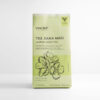
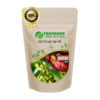
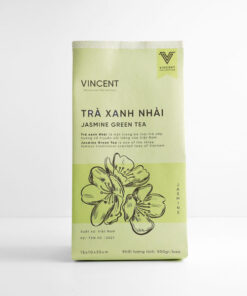
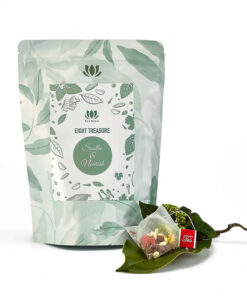

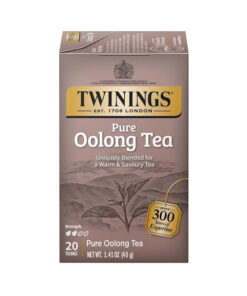
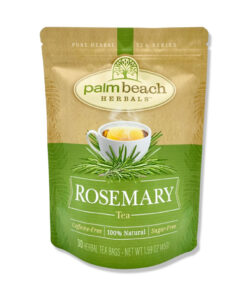



Reviews
There are no reviews yet.